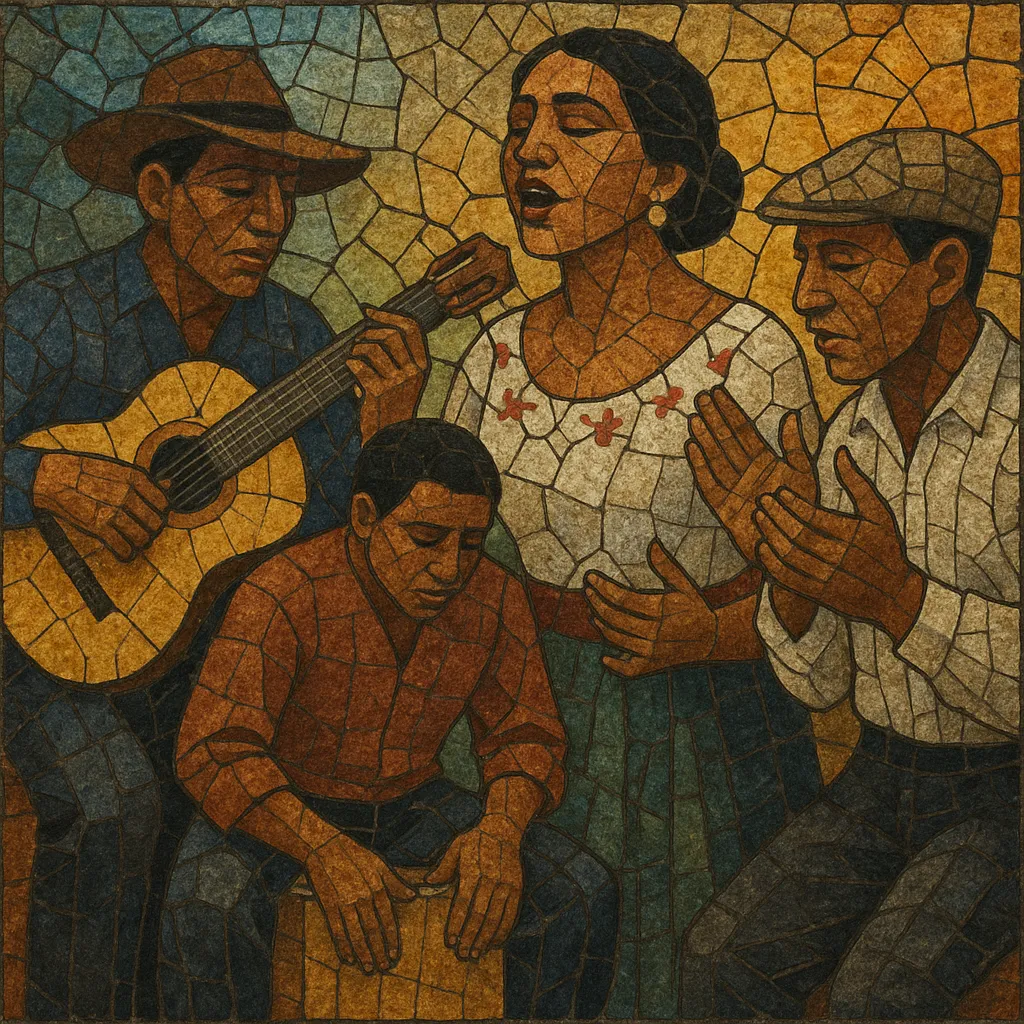Música criolla is the coastal Peruvian Creole song tradition that blends Spanish, African, and indigenous elements into a lyrical, guitar‑led popular style. It is both an umbrella term for related forms and a repertoire in its own right, centering on the vals criollo (Peruvian waltz) while encompassing marinera, tondero, festejo, landó, and others.
Typically performed with nylon‑string guitars, cajón peruano, and hand percussion (quijada de burro, cajita, palmas), it features elegant melodies, rich harmonies, and poetic lyrics about love, the city of Lima, nostalgia, and everyday life. Rhythmic interplay between European meters (3/4, 6/8) and Afro‑Peruvian syncopations gives the music its supple swing and expressive phrasing.
Beyond a musical style, música criolla signifies a Creole identity forged in Peru’s coastal cities, celebrated in peñas (social gatherings) and on El Día de la Canción Criolla (October 31).
Música criolla took shape in Lima and coastal Peru as urban populations mixed Spanish colonial song and dance forms with Afro‑Peruvian rhythms and local poetics. Early salon and street repertoires—waltzes, polkas, and the zamacueca—converged with Afro‑Peruvian percussion practices, giving rise to the vals criollo and related styles.
Radio, recordings, and peñas helped standardize performance practice: two or three guitars accompanying one or more singers, with cajón and hand percussion. Composers such as Felipe Pinglo Alva and later Chabuca Granda refined the genre’s harmonic language and poetic imagery. Parallel coastal forms—marinera (with its hemiola swing), tondero (from northern Peru), and Afro‑Peruvian festejo and landó—circulated within the same criollo milieu, shaping a shared identity and repertoire.
The Afro‑Peruvian revival spotlighted instruments like the cajón and brought new global attention through artists such as Susana Baca and Eva Ayllón. Arrangers and guitarists (e.g., Óscar Avilés) codified accompaniment styles that remain canonical. Today, música criolla is celebrated annually on El Día de la Canción Criolla, taught in cultural centers, and adapted by contemporary artists who fuse it with jazz, pop, and world music while preserving its poetic core.
While rooted in early 20th‑century Lima, música criolla remains dynamic—performed in intimate peñas, formal theaters, and recordings that honor its narrative lyricism, nuanced guitar textures, and Afro‑Peruvian rhythmic vitality.


